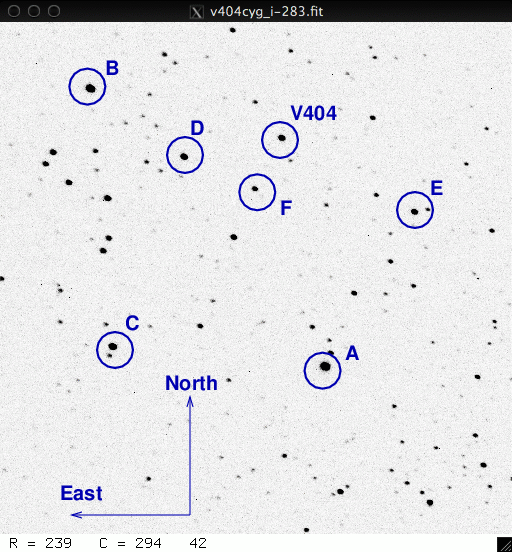
On the night of June 21/22, 2015, I observed the cataclysmic variable star V404 Cyg.
As before, I made measurements through the I filter. The star was still rising tonight, at roughly I = 10.
The main setup was:
Notes from the night
This object, originally noted as Nova Cyg 1938, is a Low-Mass X-ray Binary (LMXB) which is thought to consist of a black hole of roughly 10 solar masses and an ordinary star of about 0.6 solar masses. A good summary can be found at AAVSO Alert Notice 520 ; one paper from many, picked at random, is Characterizing the quiescent X-ray variability of the black hole low-mass X-ray binary V404 Cyg, which suggests that a jet is responsible for most of the radiation emitted during quiescence. The binary has an orbital period of about 6.47 days.
Here's a chart of the field of V404 Cyg, which is at
RA = 20 24 03.83 Dec = +33 52 02.2 (J2000)
The chart is about 12x12 arcminutes.

Among the labelled stars are
B TYC 2693-1473-1 F UCAC4 620-101865
The star "F" has an Ic magnitude of 11.967 +/- 0.018 according to AAVSO sequence 15088BFS.
Below is a graph showing the sky brightness as a function of time during the observing run. The smooth curve indicates lack of clouds, except for the brief period around 2195.80. The few high points near 2195.72 are due to moving the dome slit panel.

Below is a graph showing the FWHM as a function of time during the observing run. I didn't refocus this evening, as the temperature didn't change much; it was still 16 degrees C at sunrise. The few low points are due to the brief motion of the dome slit panel.

Using aperture photometry with a radius of 4 pixels (radius of 5.7 arcsec), I measured the instrumental magnitudes of a number of reference stars and the target. Following the procedures outlined by Kent Honeycutt's article on inhomogeneous ensemble photometry, I used all stars available in each image to define a reference frame, and measured each star against this frame.
Sigma-vs-mag plot: V404 Cyg is the big, big, BIG outlier, and one of the brightest stars in the field.
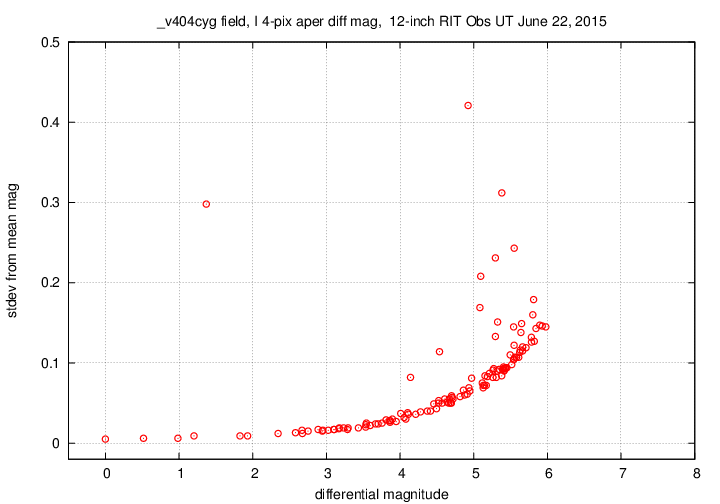
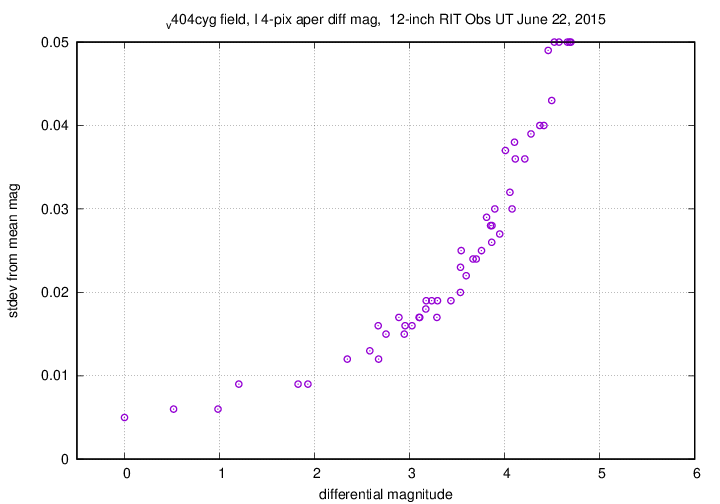
Image adjustment factor: the scatter is mostly due to trailing, except for the brief period around 2195.80, when clouds passed overhead.

The target, shown in green, shows a crazy variation over the course of the run.

Here's a closeup of V404 Cyg by itself.
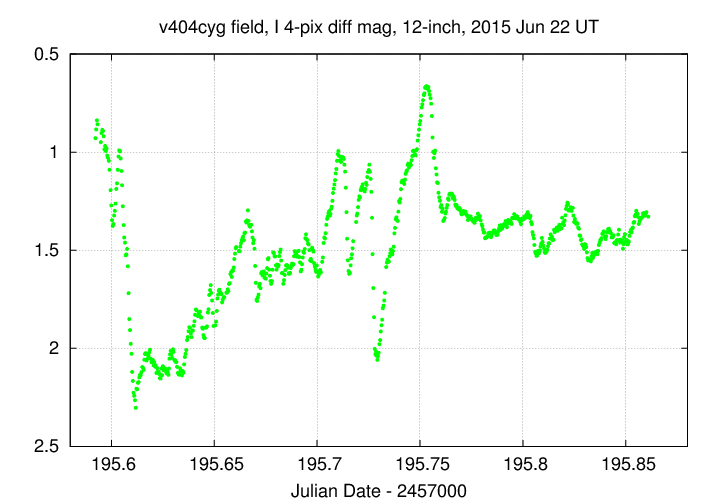
A comparison of measurements I've made on different nights shows that the target has grown brighter:
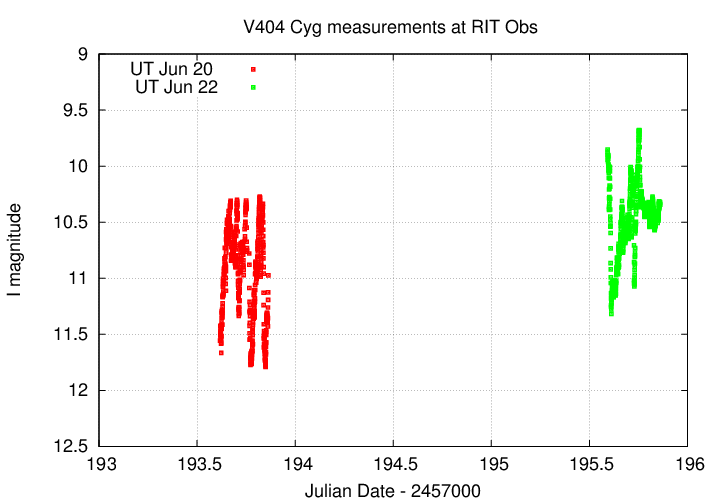
I used the AAVSO's value for the I-band magnitude of star "F" = UCAC4 620-101865 to shift the ensemble magnitudes to the standard I-band scale. You can download my measurements below. A copy of the header of the file is shown to explain the format.
# Measurements of V404_Cyg made at RIT Obs, Jun 22, 2015 UT, # in good conditions, # by Michael Richmond, using 12-inch Meade and SBIG ST-9E CCD. # Exposures 20 seconds long, I filter. # Tabulated times are midexposure (FITS header time - half exposure length) # and accurate only to +/- 1 second (??). # 'mag' is a differential magnitude based on ensemble photometry # using a circular aperture of radius 7.4 arcseconds. # which has been shifted so UCAC4 620-101865 has mag=11.967 # which is its Ic-band mag according to AAVSO chart 15088BFS. # # UT_day JD HJD mag uncert Jun22.09227 2457195.59227 2457195.59459 9.943 0.007 Jun22.09264 2457195.59264 2457195.59496 9.898 0.007 Jun22.09296 2457195.59296 2457195.59528 9.852 0.007
Last modified 6/21/2015 by MWR.